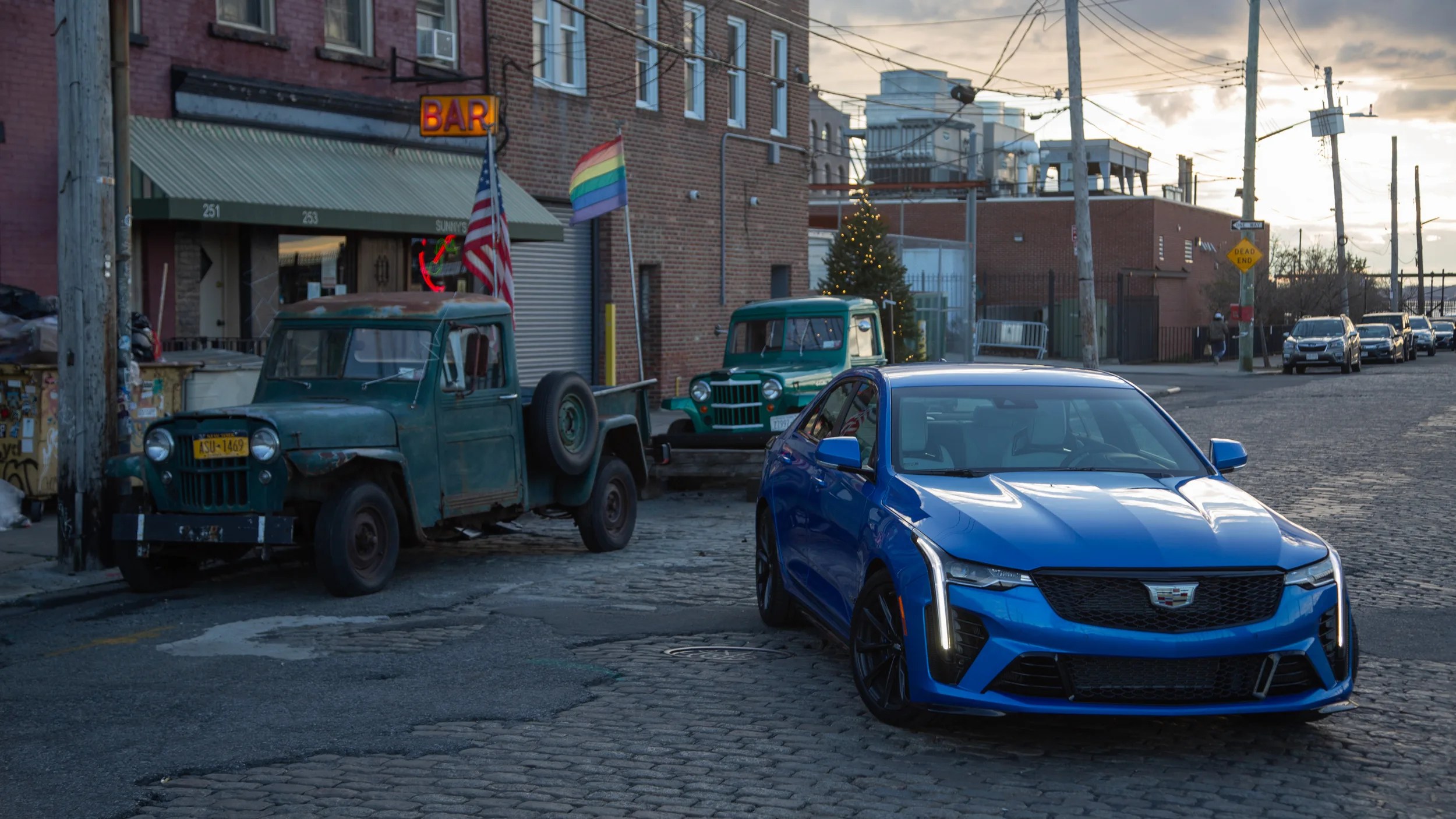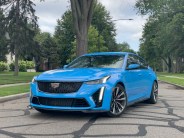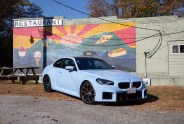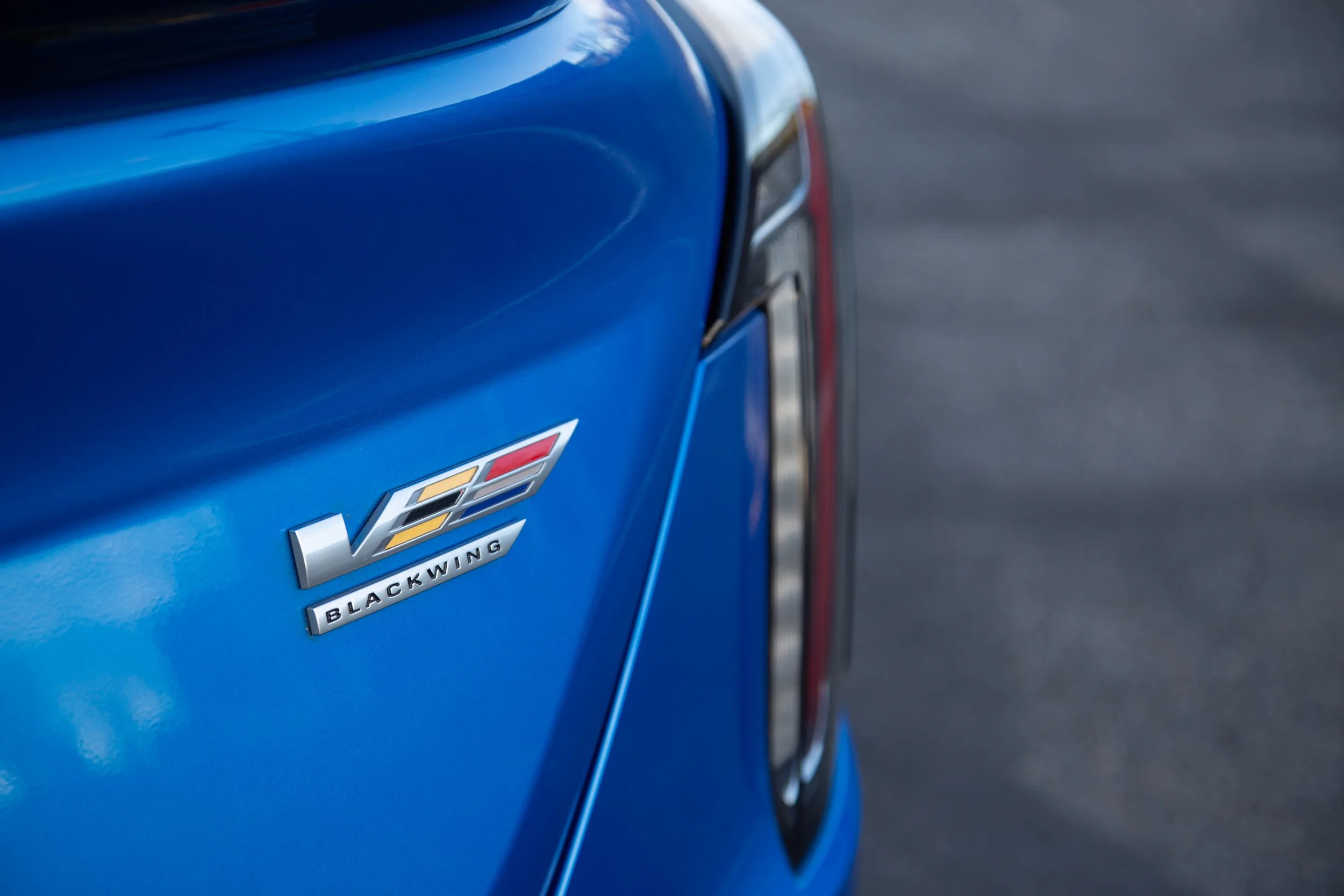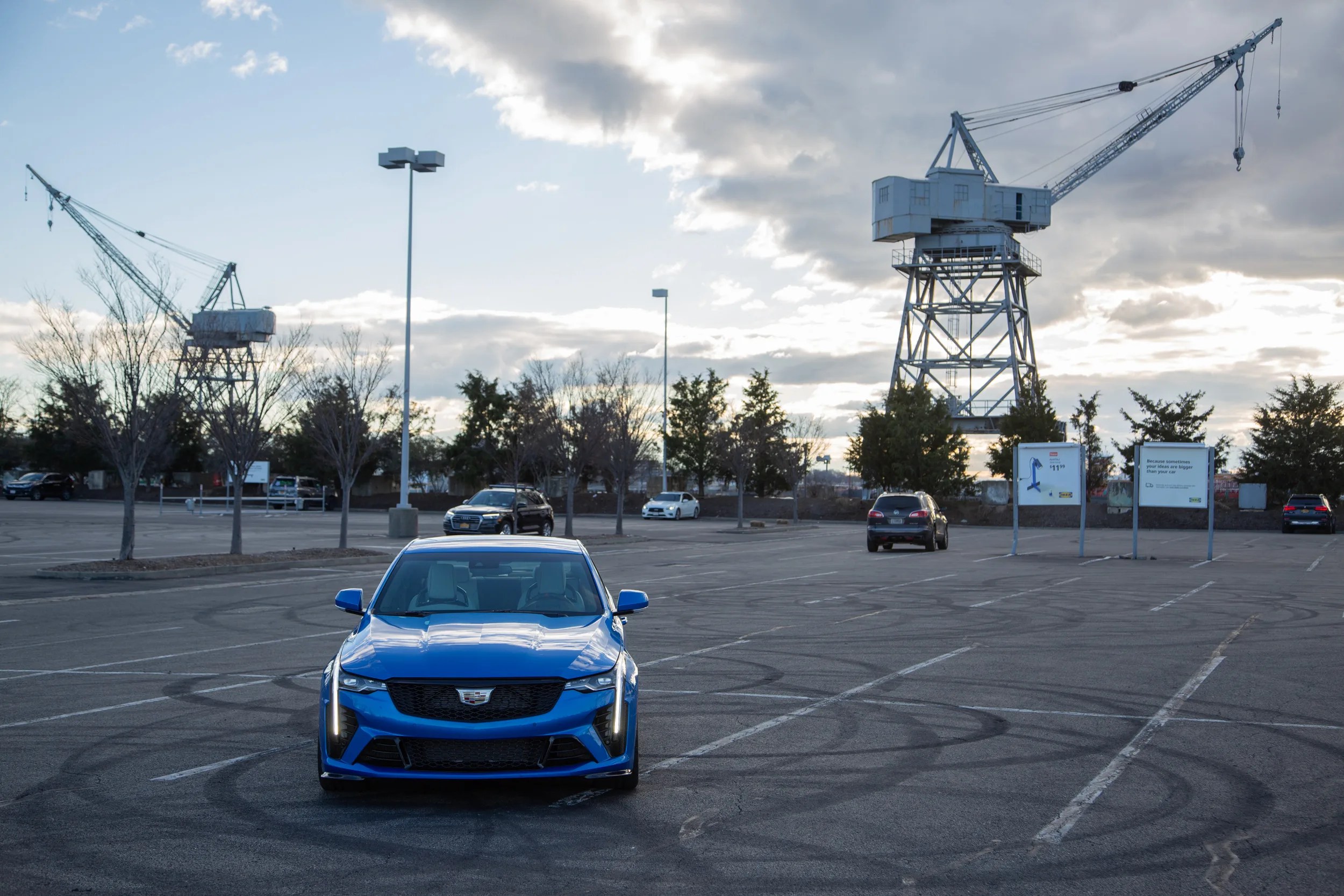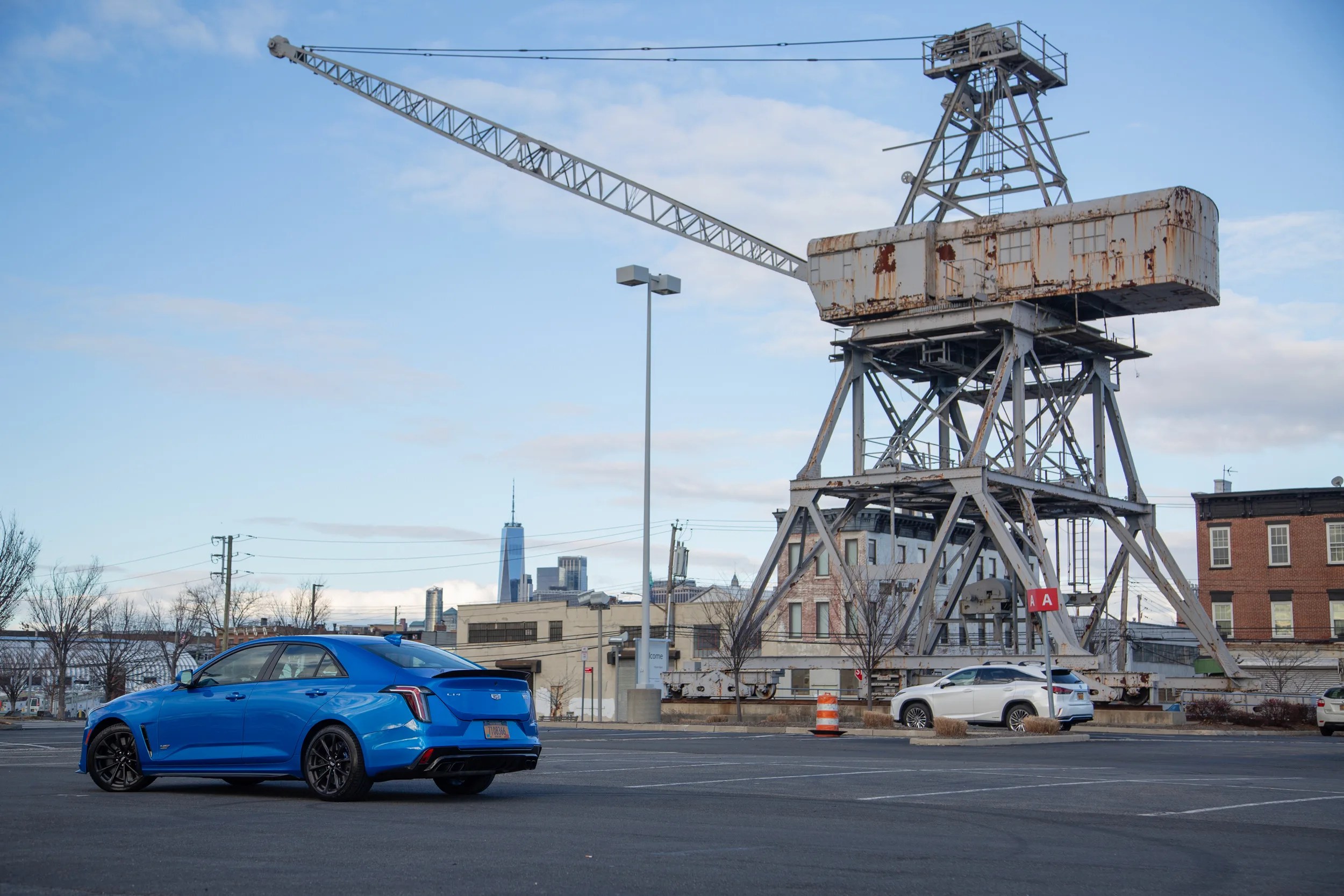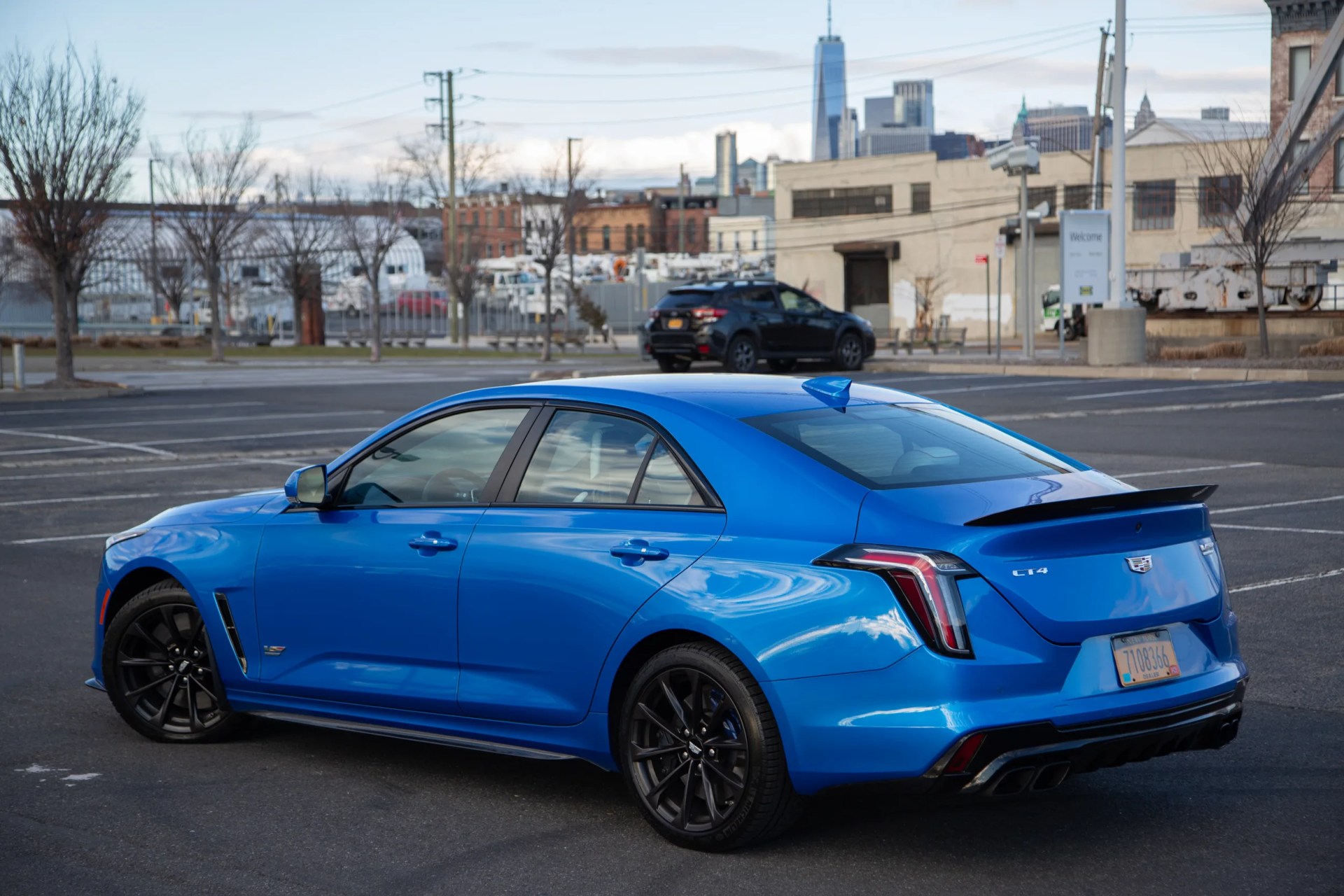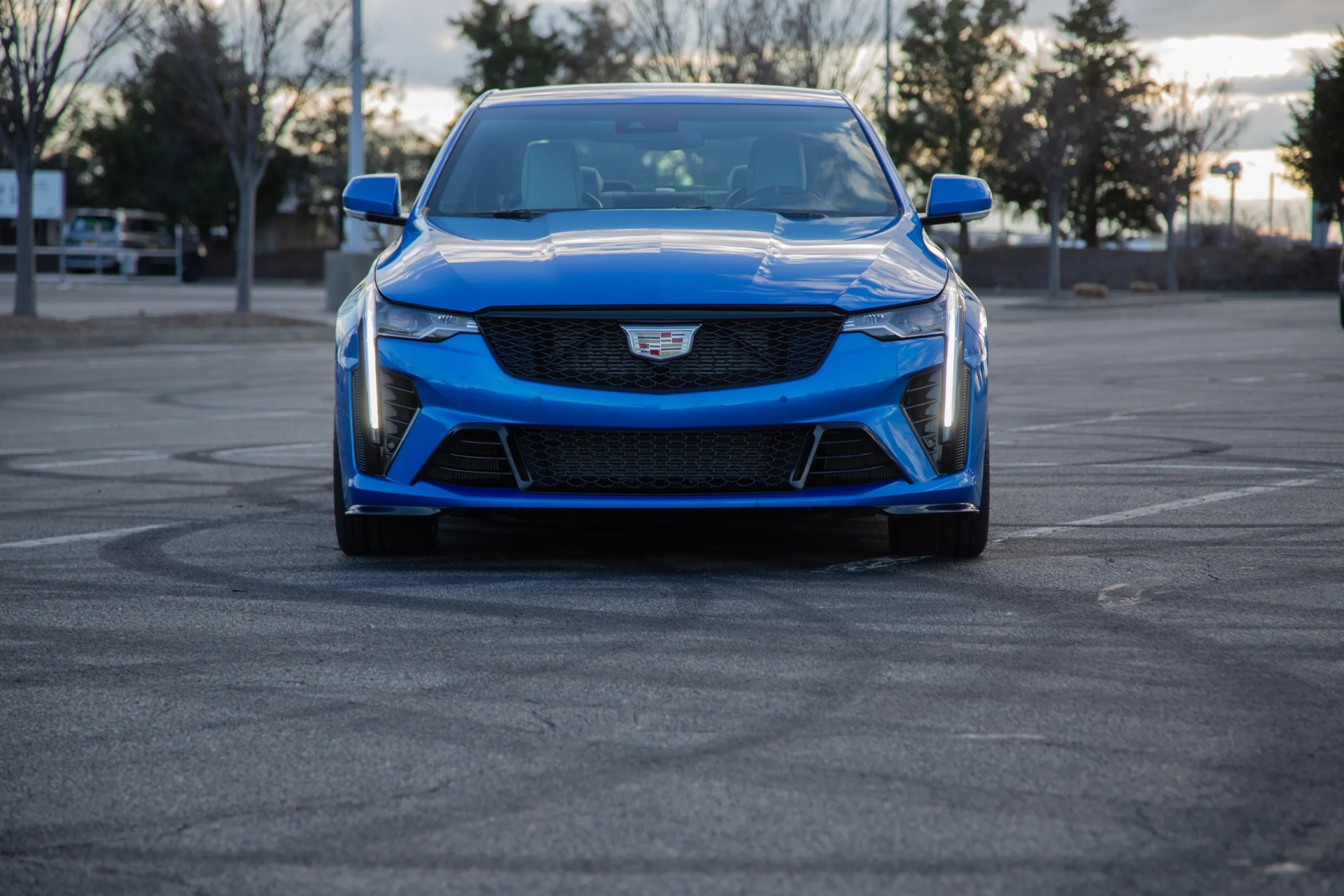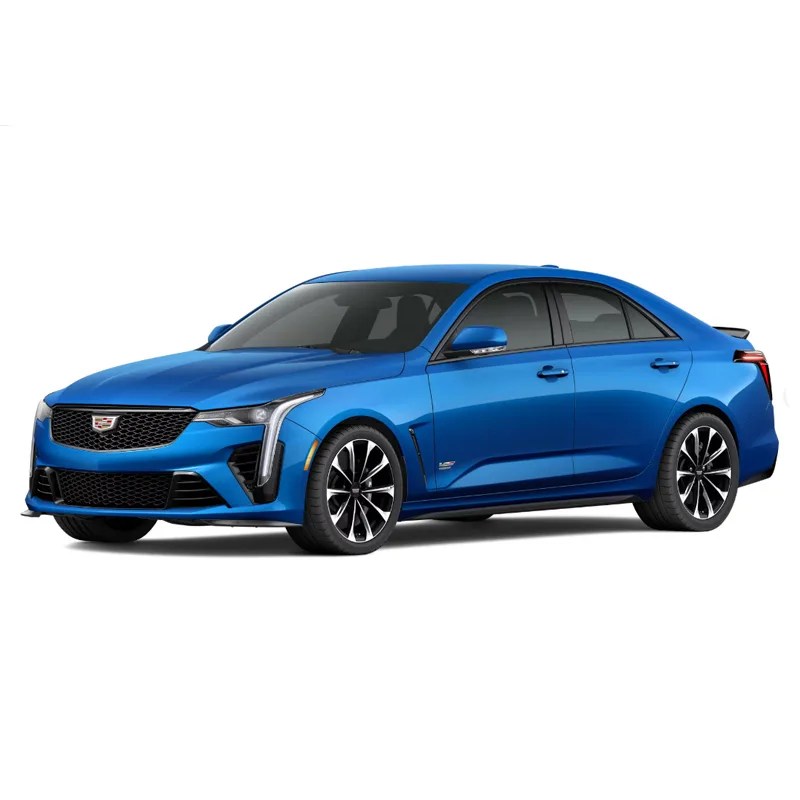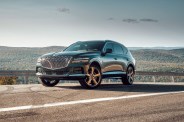I know the following sentence may subject me to ridicule from my fellow gearheads, but I’m going to state it anyway: I think the Cadillac CT4-V Blackwing is better with an automatic transmission.
Yes, that CT4-V Blackwing. The one that makes incredible performance cars like the BMW M3 and Mercedes-AMG C 63 and Audi RS 5 look average at best and sloppy at worst. The car that, as of 2024, represents 50 percent of the stick shifts in the U.S. General Motors passenger car lineup, now that the Camaro is gone. The car that is a rolling version of Bill Pullman’s Independence Day speech in the face of Cadillac’s all-electric future. The car that, against all odds and reason, still offers buyers a chance to row their own way through a six-speed manual gearbox.
It’s better with the automatic.
Before you start throwing rocks at me, however, give me the chance to make my case — and add a caveat into the mix.
The automatic is, arguably, the better partner for the CT4-V Blackwing’s engine
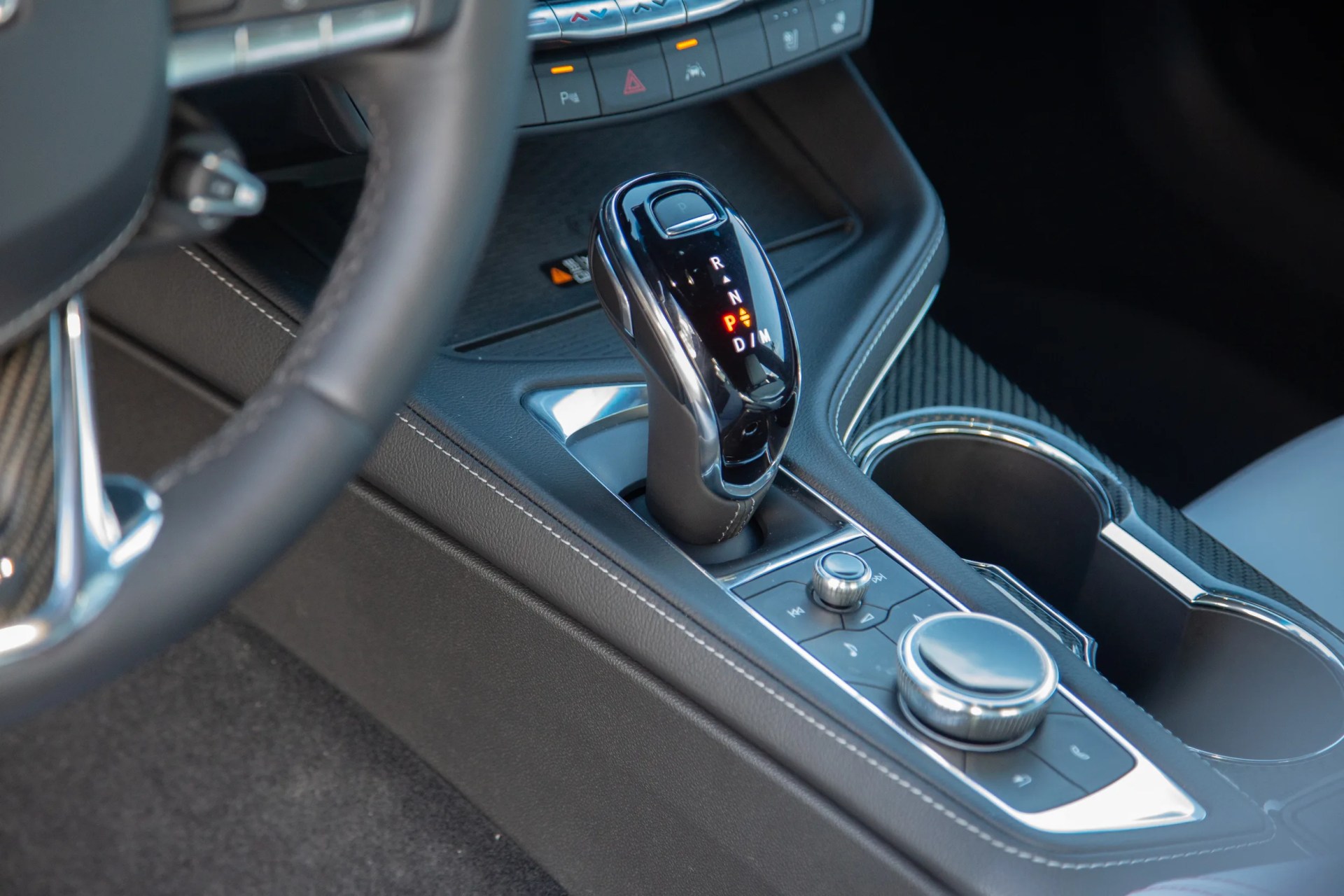
At least, it is by the standards of the V-Series Blackwing models. See, the CT5-V Blackwing is an absolute torque goliath; you can surf the power band like a tidal wave in practically any gear, feel the acceleration build like an amusement park ride. The CT4-V Blackwing is no slouch, but its twin-turbocharged 3.6-liter V6 makes its peak torque of 445 lb-ft from 3,500 to 5,000 rpm, with horsepower topping out at 5,750; it simply doesn’t pack the same range of oomph as its 668-hp, 659-lb-ft sibling. Plus, while lag is minimal, its turbochargers suffer from more of it than the supercharger used under the hood of the bigger V B’wing.
The automatic is better positioned to take advantage of this because, well, it has more forward gears to choose from — and with so many cogs to choose from, it’s able to better stay in the meaty part of the power band. GM has some remarkable powertrain engineers, and they’ve designed and trained this 10-speed automatic to work with this engine in a way that no human ever could.
The transmission will always choose more intelligently than you when on the boil; even if you felt comfortable using the paddles and keeping track of which gear you’re in, the car will know what to do better. The gearbox even works with GM’s exceptional Performance Traction Management system to unlock different shift maps for when you’re engaging that setup’s super-intuitive driving helpers — you’ll see a little green gear icon pop up as the car tells you it’s ready to party.
The only objective criticism I can levy against the automatic is the shifter itself. It’s certainly functional — GM thankfully hasn’t joined the trend of tossing aside actual levers, even if it’s just a joystick rather than a physical lever that shifts a gearbox — but it looks and feels cheap, what with its shiny plastic trim. (Cadillac would probably prefer I not point out it’s the same part as the one found in the pre-facelift Chevy Bolt, but hey … it is.)
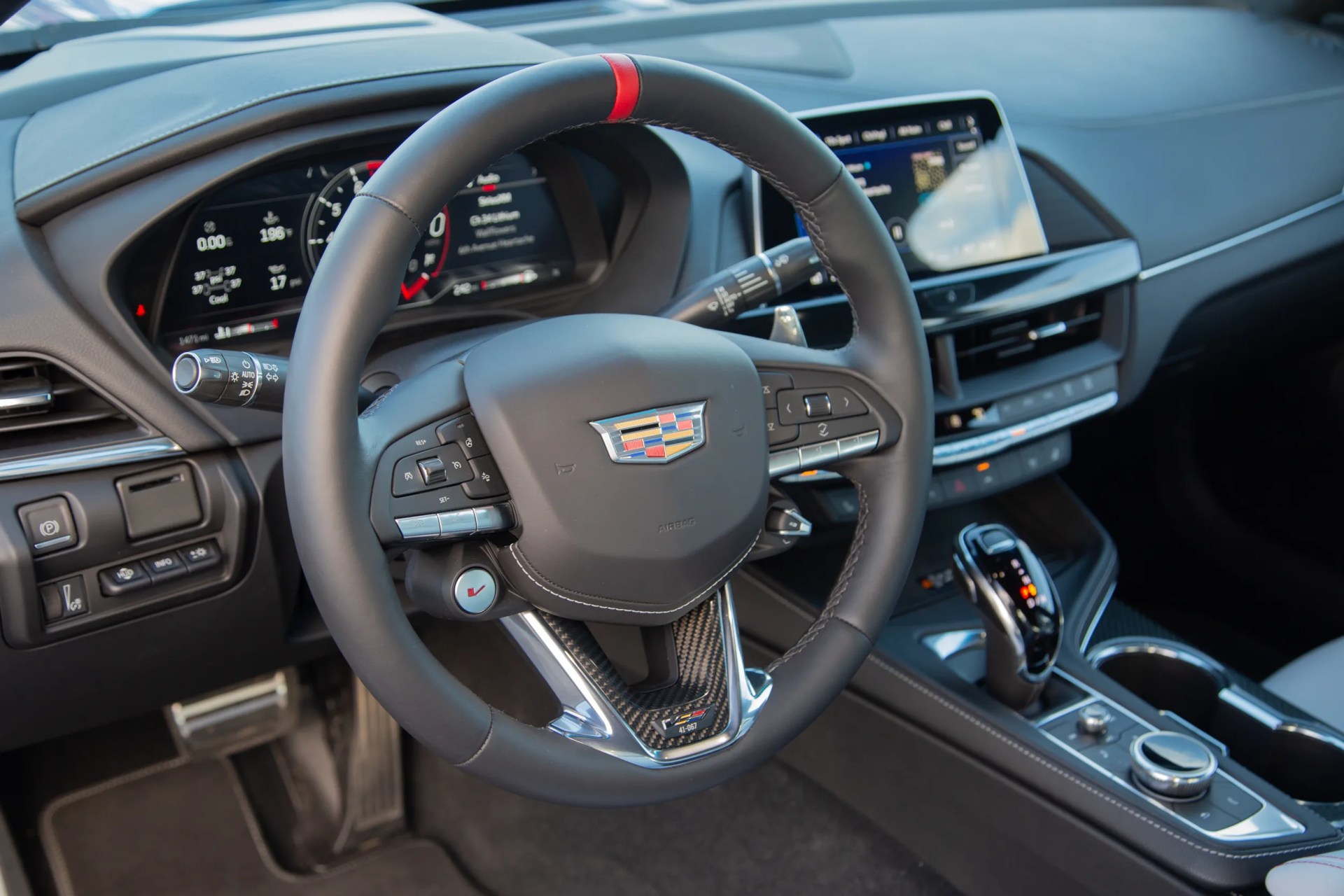
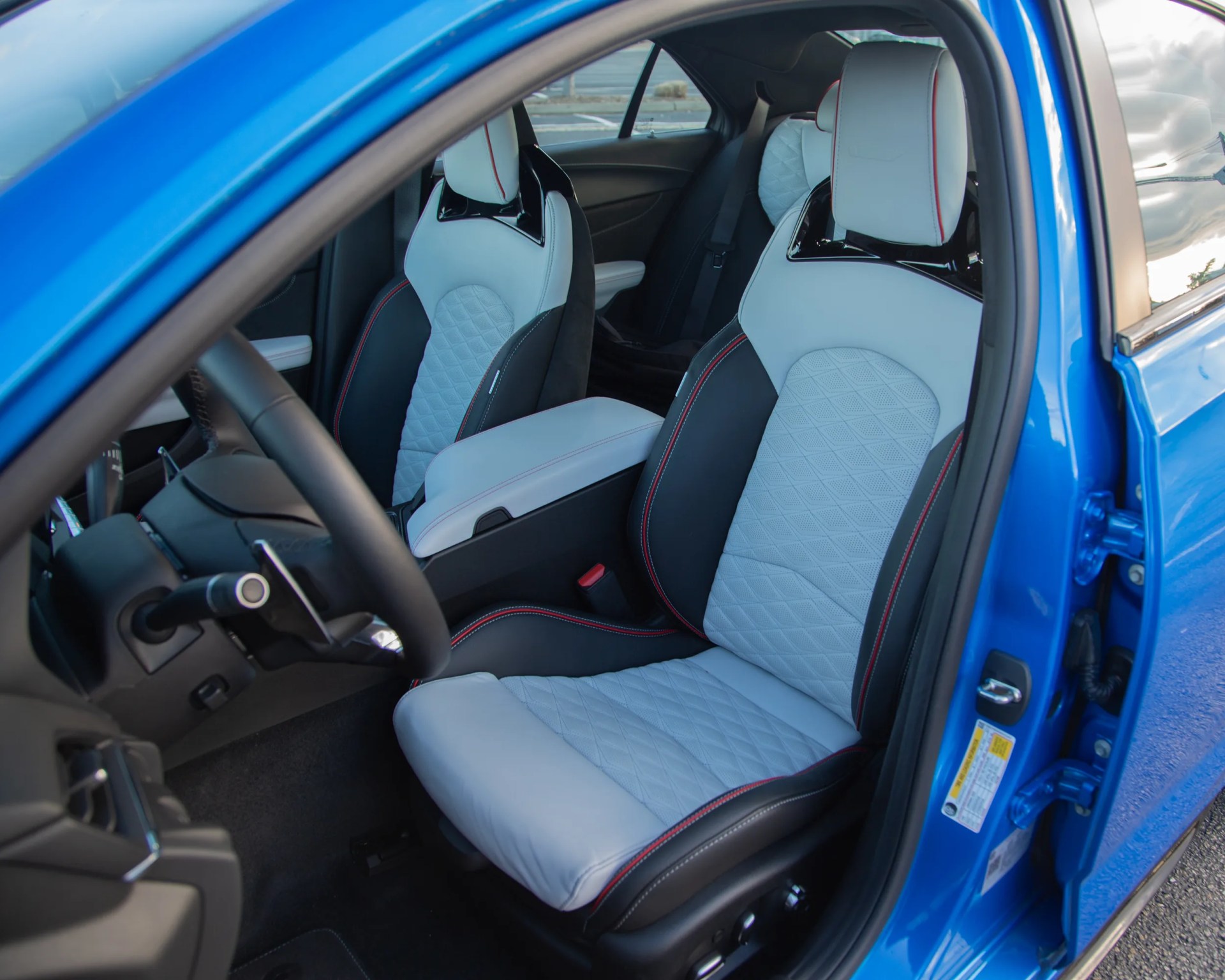
The automatic also makes life easier
Not only does the automatic excel at maximizing pace, it also lets this Caddy do a better job in the traditional Cadillac role of calmly driving around. Left to its own devices, it slips from gear to gear in the background, letting the driver concentrate on other delights: the supple leather and ideal support of the heated and ventilated high-performance seats; the direct, connected feel of the steering; the crispness and readability of the controls. (And, okay, maybe give them time to notice the occasional dash of hard plastic.)
Of course, “easier” is largely subjective — one person’s challenge is another person’s piece of cake. But I speak as a New Yorker — and having spent the last 18 years of my life living and driving in New York City, I can say that having an automatic is, without a doubt, a requirement if you’re planning on driving on the regular.
The Cadillac CT4-V Blackwing
3 photos
“Please,” you may scoff, “I drive a clutch in heavy traffic all the time, and I don’t mind!” To which I reply, no. You drive in what you think is heavy traffic.
Real heavy traffic is what you find on the Brooklyn-Queens Expressway at 5:30pm on Friday when half a million souls are all trying to make their way home to Long Island / New Jersey / Staten Island with maximum haste in order to use every minute of the weekend.
Real heavy traffic is inching your way up the FDR Drive at one mile per hour because construction has closed the right lane at the same place where the 59th Street Bridge exit creates its own traffic jam on the left.
Real heavy traffic is going a mile an hour for an hour on the Taconic State Parkway because it’s the start of Presidents’ Day weekend and somebody crashed their E-Class wagon in the ice, thus clotting up a century-old road with a present-day mass of Tri-Staters all attempting to get to parts north for a winter getaway, and you’re trying to slowly make your way up a hill, and no matter how delicately you work the clutch you can’t keep from riding it and soon an acrid stench fills the cabin and the left pedal loses pressure and for the first time in your life you curse the manual gearbox and wish you had an automatic and realize perhaps this is the moment you’re not young anymore and that fills you with passive resignation and then the fact that you reacted that way makes you even more convinced you’re getting old and you start to spiral and then you realize this whole existential crisis could have been avoided by a goddamn car that shifts itself.
That kind of traffic.
